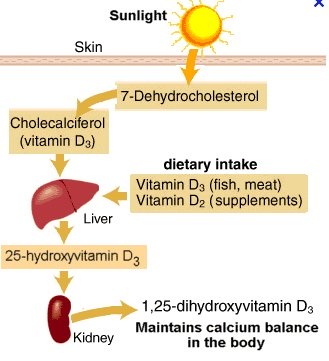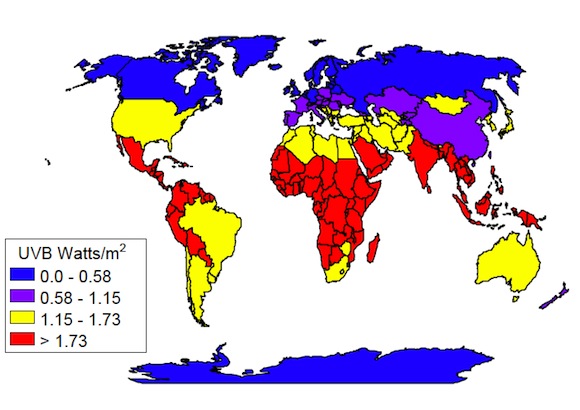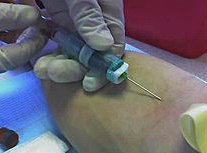Best Foods high in vitamin D
There are three ways of getting vitamin D...
- eating foods high in Vitamin D
- pharmaceutical supplementation
- exposure to the sun's UVB rays
Vitamin D is much touted these days for optimum health benefits but the questions many people ask are... 'How much do I need?' and 'How best do I get it?'
Ignoring the options to either supplement or to expose yourself outdoors to the sun's UV rays, I looked into into what dietary sources there are, that are naturally rich in Vitamin D.
 Vitamin D Creation Proces
Vitamin D Creation ProcesSome people believe that the Vitamin D we can get from food or dietary supplements offer the same benefits as the vitamin D3 we obtain through exposure to UVB rays, as long as we are careful about overdoing it and being exposed to the danger of skin cancer.
My understanding is that vitamin D cannot be used by the body until it is processed by the liver and the kidneys and that regardless of how it enters the body, the Vitamin D will go through the same creation process.
However, Vitamin D obtained via the sun's UVB rays through one's skin is proportionately considerably more than that obtained through food or supplements, even in a very short space of time. ie. time in the sun.
Looking into the various foods high in Vitamin D, I have also compared this with what may be gained by exposure to sunlight.
 Hands reaching for the sunshine
Hands reaching for the sunshineNatural source of foods high in Vitamin D
Although we can find many foods in the supermarket that have been fortified with a synthetic form of Vitamin D, there are only a select number of foods containing vitamin D in them naturally.
In our modern urbanized times, where a large proportion of the human race now live in cities, many of us spend countless hours inside houses, cars and shopping malls. This seriously limits our exposure to the sun's rays and therefore the ability to make Vitamin D.
The lack of Vitamin D may be a principle cause of many ailments, although many scientific bodies have yet to embrace this as a proven science. According to Marc Sorenson, EdD, in his book "Vitamin D3 and Solar Power" there are "105 diseases and disorders or conditions which may be diminished by regular sunlight exposure and /or vitamin D supplementation". Some of these are more readily accepted by science, such as rickets and SAD (seasonal affective disorder) or seasonal depression.
 Salmon: Food high in vitamin D
Salmon: Food high in vitamin DWhether or not you believe Vitamin D to be scientifically proven or not, it appears difficult to overdose on Vitamin D through foods high in vitamin D or sunlight exposure. The only way to overdose, or get into toxicity levels, is through supplementation.
It seems rather a good idea to me therefore, to embrace the potential for improved health by paying attention to my Vitamin D levels and keeping them high through consumption of foods high in Vitamin D first and then, if necessary, through supplementation.
AAD: Daily recommendations for Vitamin D
In order to have a diet high in Vitamin D, keep the following in mind - The American Academy of Dermatology (AAD), based on scientific evidence they have gathered that supports the key role of calcium and vitamin D in skeletal health, recommend the following:
 AAD:Vitamin D RDA
AAD:Vitamin D RDARDA = recommended dietary allowance
IU = International unit
Note - the RDA is based on regular healthy people having no sunlight exposure
Fish: the key group of foods high in Vitamin D
To obtain these daily allowances, I found various references or tables of foods high in Vitamin D and have attempted to summarize them.
Fish is definitely a good source but there are vast differences between the different species. What always heads the list is Cod liver oil but of course is measured as an oil extract rather than whole fish.
Besides Vitamin D, fish in general are also full of omega-3 fatty acids, which provide many extra health benefits and help combat dry skin and hair.
The following fish give you some idea of the differences in their Vit D IU's:
- raw Atlantic herring (2060)
- raw catfish (1053)
- raw wild oysters (941)
- sockeye salmon (920)
- Steelhead trout (760)
- raw halibut (645)
- pickled Atlantic herring (519)
- Pacific sardine (516)
- raw Atlantic mackerel (351)
- Shrimp or prawns (287)
- Atlantic sardine (262)
- tuna (238)
- caviar (184)
- cod (160)
- flatfish (flounder and sole) (132)
Also of interest to me was the difference between fresh, wild and canned salmon - see another visual representation below:

Vegetables as a source of foods high in Vitamin D
Vegetables, relatively, are not a very good source of Vitamin D.
Top of the vegetable list of foods high in vitamin D are:
- mushrooms (165 IU)
- spinach (29 IU)
- potatoes (25 IU)
- corn (17 IU)
However, as seen above, dried Shiitake mushrooms are claimed to have more vitamin D, albeit D2, than wild salmon. Although it would probably be more equitable to compare the fresh Shiitake mushrooms from a weight perspective and then they are considerably less.
What is of added interest to me is that the dried Shiitake have Vitamin D2 and the fresh ones vitamin D3. I have not yet found an explanation for this.

Some mushrooms provide vitamin D2 in variable amounts and this seems to be related to how much UV light they are exposed to, even under controlled conditions.
Natural sunlight seems to create a higher level of Vitamin D though and are therefore more desirable.
Shiitake of course, are also wonderfully rich in Vitamins B1 and B2.
Dairy as a food high in Vitamin D
Left in their natural state, dairy is not really a good recommendation for foods high in Vitamin D, but they do contain some vitamin D:
- dry cows milk whole (126 IU)
- goats milk (35 IU)
- cows cream whole (30 IU)
- swiss cheese (23 IU)
- edam cheese (20 IU)
- cows butter salted (20 IU)
Fortified dairy foods that are very popular are yogurts - for the young and old alike. In addition, yogurt contains probiotics - the "good" bacteria found in the body that aids digestive health and decreases bloating. Look for yogurts that have "live and active" cultures in them to be sure you're getting the probiotics desired.
For babies, fortified infant formulas are recommended to boost Vitamin D levels - they vary from 316 IU per 100g to 77 per 100g. This of course, depends entirely on your babies' Vit D needs.
Health indications to increase foods high in vitamin D:
- Muscle aches and muscle weakness
- Frequent falls, particularly among older persons
- Bone pain, frequent bone fractures, or soft bones
- Stunted growth in children
- Asthma in children (especially severe asthma)
- Impaired cognitive function, especially among older persons
- Lowered immunity
- Chronic low energy and fatigue
- Depression, particularly among older persons
- Presence of any autoimmune disorder
Lack of exposure to sunlight for any reason, including geography, use of sunscreen, or wearing of protective clothing will be a good reason to get your Vitamin D levels checked, or even to just decide to focus on eating foods high in Vitamin D to compensate.
 Geographical view of Sunlight for Vit D creation
Geographical view of Sunlight for Vit D creationThe key to deciding whether or not you need to increase yours or your child's daily amount of Vitamin D3 is to take a blood test and decide if you are low and if so, how aggressive you need to be to boost your levels up.
If the Vit D is very low and perhaps you suffer from some disease or ailment then you may need to focus on foods high in Vitamin D every day, as well as daily supplements. The latter needs to be under some instruction from your doctor or medical practitioner.
 Vitamin D blood test
Vitamin D blood testReferences
Position statement on Vit D from AAD
Vitamin D in Salmon
Michael Holick's "Vitamin D Deficiency" NEJM, 2007




New! Comments
Have your say... please leave me a comment in the box below.